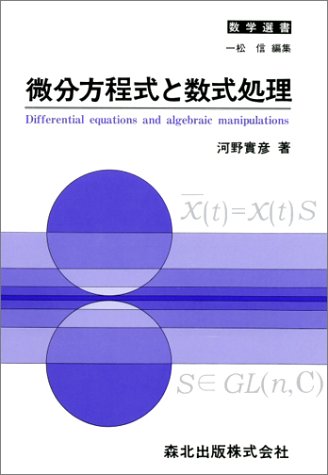3 0 0 0 ビキニ灰により被災した放射能症患者の臨床經過報告(中間報告)
- 著者
- 小山 善之 熊取 敏之 澁谷 敏三 新谷 和夫 福田 龍三 今村 幸雄 佐野 一郎 鴫谷 亮一 古屋 曉一 河野 實 日野 佳弘 渡邊 孝 武正 勇造 中村 なをゑ 小澤 義光 林 康之 平島 信子 早船 喬一 濱口 榮祐 木村 信良 神田 清 岡本 十二郎 濱田 政彦 大橋 成一 橋本 敬祐 小酒 井望 石井 暢 天木 一太 深澤 義明 貴船 トミ子 松村 義寛 中野 巖 種田 強一郎 林 義次 村田 貢
- 出版者
- Japanese Society of National Medical Services
- 雑誌
- 医療 (ISSN:00211699)
- 巻号頁・発行日
- vol.9, no.1, pp.5-45, 1955
This paper is an intermediate report of the clinical observations and various investigations made upon the 16 patients of the radiation sickness caused by BIKINI ashes on. 1st March 1934. The patients were admitted to the First Tokyo National Hospital on March 28th, and this report shall be for the period of the 5 months from March 28th to the end of August, 1964. Later, a thorough and complete report will be given, in which some amendments may be added to the present paper.<br>INTRODUCTION: At 3.50 a. m. on 1st March 1954, the 5th Lucky Dragon, a fishing boat, with a crew of twenty three on board, was located at about 100 miles east of BIKINI. The boat was under grey-white ash-fall for more than 5 hours. The crew was exposed to the ash-fall for 1.5 to 5 hours. The evening of that day they suffered from headache, anorexia, conjunctivitis and later nausea, vomiting, exhaustion and diarrehea, Several days later they suffered from itching, pain, rash, and erosion on the exposed skin areas. One week later two of the crew had hemorrhage of gingiva and some of the crew suffered from depilation. On March 19th, the boat returned to its base at Yaizu. On March 16th, the crew was admitted to the Kyoritsu Yaizu Hospital and on March 28th, 16 patients out of 23 were transfered to our hospital (the First Tokyo National Hospital).<br>On March 26th, Prof. Kimura's laboratory of Tokyo University made the analysis of the ashes taken from the 5th Lucky Dragon and found the following radioactive substances: Sr-89, Sr-90, Y-90, Y-91, Zr-96, Nb-95m, Nb-95, Ru-103, Ru-106, Te-129m, Te-129, Te-132, I-131, I-132, Ba-140, La-140, Ce-141, Ce-144, Pr-143, Pr-194, Nd-147, Pm-147, S-35, Ca-45, U-237, and Pu-239. The remaining radiation of the boat was investigated by Dr. Kakei et al. of March 17th and found it to be around 100mr/hr. Upon this data the total radiation was estimated at a count of 270 to 440γ. on the crew. In addition to the external exposure of such radiation, internal exposure, such as respiration of contaminated air, drinking of contaminated water and taking of contaminated food, shall be taken into consideration in the present cases. Radioactivity was found in the bile and urine taken from the patients.<br>GENERAL REMARKS: The 16 cases were strong young men but their body weight began to decrease from the middle of May and high or slight fever, anorexia, feeling of exhaustion, diarrhea and headache continued.<br>Skin and Hair: Irregular depilation, depigmentation, pigmentation with rain and itching, and erosion was observed. Some cases had folliculitis with pustules in April, while others recovered from erosions and at the end of May, regeneration of hair began. In July, hair condition was almost normal.<br>Blood and Bone-marrow: At the middle of April, the lowest peripheral leucocyte count was less than 2, 000. Two cases who had lower leucocyte count recovered earlier, i. e., their leucocytes increased to around 5, 000 at the middle of May. Meanu hile, the other cases had from 3, 033 to 4.000 count during the entire period. The former cases had also moderate anemia while the latter had only slight anemia. Blood platelet count of the former cases was less than 20, 000 and the recovery was slower than that of the leucocyte count. Reticulocyte count kept pace with that of leucocyte. In the former cases, myelocyte and other immature blood cells appeared temporarily in the circulated blood and eosinophile cells increased. The count of bone-marrow cells decreased remarkably (8, 000), i. e. panmyelophthisis, which later recovered slowly. In the latter cases, peripheral leucocyte findings and myelogram had almost no changes from the beginning of our observation and count of bone marrow cells was remarkably different by the sites of bone-marrow puncture. Vacuole and toxic granula appeared in the neutrophile cells in the circulated blood and vacuoles also appeared in lymphocyte and monocyte.
3 0 0 0 微分方程式と数式処理
1 0 0 0 一般超幾何と非線形可積分系の総合的研究
1)一般超幾何関数およびOkubo方程式の研究,2)Painleve方程式をはじめとする非線形可積分系の研究が本課題の目的である.GL(N,C)の正則元の中心化群の共役類はNの分割によって決まるが,一般超幾何関数は,このようにして得られる極大可換部分群の普遍被覆群の指標をラドン変換して得られるGrassmann多様体Gr(n,N)上の関数である.この積分表示の被積分関数から定義される代数的なde Rham cohomology群を具体的決定を行った.この問題はn=2の場合には一般的に,またn>2のときにNの分割が(1,...,1)や(N)の場合にすでに解決していたがそれ以外の場合には未解決であった.今回,分割が(q,1,...,1)の場合にcohomology群のpurity, top cohomology群の次元,具体的な基底の構成を与えた.この結果は関数を特徴付けるGauss Manin系を決定するときに重要である.また,分割が(N)の場合,すなわちgeneralized Airy関数の場合にde Rham cohomologyに対する交点理論を整備し,その交点数をskew Schur関数を用いて明示的に決定する研究を行った.このときに,特異点理論におけるflat basisの類似物が重要な役割を果たすことが示された.アクセサリパラメータを持たない方程式については,Okubo方程式についての結果を用いることによって,解の積分表示を持つことが示された.この積分表示はGKZ超幾何関数の積分表示の特別な場合になっており,その枠組みでの明確な位置づけと不確定特異点をもつ方程式を含む総合的な理解はこれからの課題である.Painleve方程式については,解全体をパラメトライズする解析的な空間である初期値空間の研究において,この空間にSymplecticな構造がはいること,初期値空間の幾何学的構造がPainleve方程式を本質的に決定してしまうことが示された.さらにPainleve方程式に関する不思議な現象が発見された.Painleve II型方程式は自然数によって番号付けされるひとつの系列の有理関数解を持つことが知られているが,この有理関数解を係数とするgenerating functionを作るとそれはAiry関数の無限大での漸近展開から得られることが分かった.
